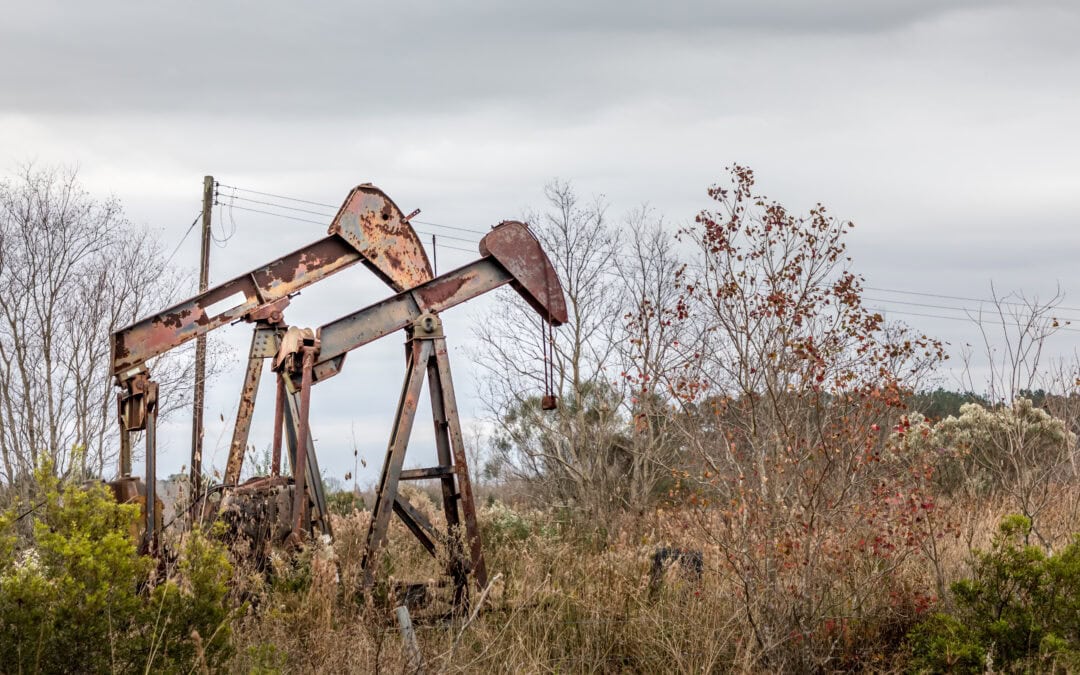Discovering abandoned equipment on your property can be a troubling experience for Louisiana property owners. This equipment, often leftover from historic oil and gas operations, can create unexpected issues and hazards. Often buried or hidden, and sometimes in plain view, remnants of industrial activities can leach hazardous materials into the soil and groundwater over time. These hazards can pose serious health risks to humans and wildlife alike, and cleaning them up can be a long, costly process.
Whether you’re a farmer, landowner, or resident of the community, it’s important to understand what you’re dealing with when it comes to abandoned equipment and how to address these concerns.
Common Types of Abandoned Equipment in Louisiana
Understanding the potential risks of abandoned equipment is a crucial first step for landowners. These remnants of the past can include storage tanks, wells, and pipes, left behind after oil and gas operations have ceased.
Oil Tanks
Oil storage tanks, both above and below ground, are often left behind when a drilling site has been exhausted and activities discontinued. These tanks, once used to store crude oil or other petroleum products, can become environmental hazards. Over time, they can deteriorate and leak their leftover contents into the surrounding environment, leading to soil and water contamination.
Wells
Abandoned wells pose another type of hazard. These wells, which may have been used to extract oil or gas, can extend deep into the earth. Over time, the well’s structural integrity can falter, creating a risk of subsurface voids or sinkholes. Abandoned wells also have the potential to contaminate groundwater if not properly plugged and decommissioned.
Pipes
Pipes, often from old gas lines or oil transfer systems, can also be left behind. These pipes may be found above or below ground and, like tanks and wells, can deteriorate over time and release residual oil or gas into the environment, potentially leading to soil or groundwater contamination.
Steps to Take When Discovering Abandoned Equipment on Your Property
Identifying potential risks can involve inspecting your property for visible signs of abandoned equipment, like protruding pipes or obvious signs of oil or gas contamination. In other cases, the signs can be less obvious, and may require a professional environmental assessment to uncover hidden dangers.
Another safety consideration is the potential for environmental damage from abandoned equipment, such as soil or water contamination. Protecting the health and safety of people and organisms living on or using your property includes ensuring that they are not exposed to contaminated soil or water.
Once a potential hazard has been identified, it’s essential to take action to mitigate the risks. Following these steps can help you navigate the situation effectively, ensuring the safety of your land and potentially leading to the remediation and restoration of the affected areas.
- Focus on Safety: This could mean restricting access to the area where the equipment has been found to prevent accidental injury particularly if the equipment is in a hazardous condition or leaking.
- Document Everything: Take photographs and detailed notes of the equipment, its condition, and its precise location on your property. This evidence can be helpful in future dealings with regulatory authorities or potential legal actions.
- Notify Authorities: It’s important to inform the appropriate state departments or regulatory agencies about the abandoned equipment. In Louisiana, this could include the Department of Environmental Quality or the Office of Conservation. They can offer guidance and resources and ensure any necessary cleanup is conducted according to state regulations.
- Seek Legal Help: A Legacy litigation attorney could help you understand your rights and may be able to assist in holding accountable any oil or gas companies responsible for the abandoned equipment.
What is Legacy Litigation?
Legacy litigation can help landowners hold oil and gas companies accountable for the abandoned equipment and for certain environmental damage. The goal of these suits is to enforce these companies’ responsibility to clean up and restore the land to its original condition less ordinary wear and tear and/or provide compensation for the damage caused.
The term “legacy” is used because these issues often relate to operations that occurred many years, or even decades, ago, leaving a legacy of environmental problems for current landowners. Legacy litigation can be a crucial tool for landowners to assert their rights and seek justice.
Seeking Legal Advice for Abandoned Equipment Issues
Working with Talbot, Carmouche & Marcello on a Legacy litigation case can provide invaluable support for landowners who have discovered abandoned equipment on their property. From the moment you discover the equipment, through the identification of responsibility, to the cleanup or compensation stage, Talbot, Carmouche & Marcello are dedicated to delivering effective legal support. With decades of experience, our successful Legacy work has contributed to us winning over $3 billion for our clients in verdicts and settlements.
If you believe you may have encountered abandoned equipment from historic oil and gas operations on your property, schedule a free consultation with us to learn more about your next steps.

